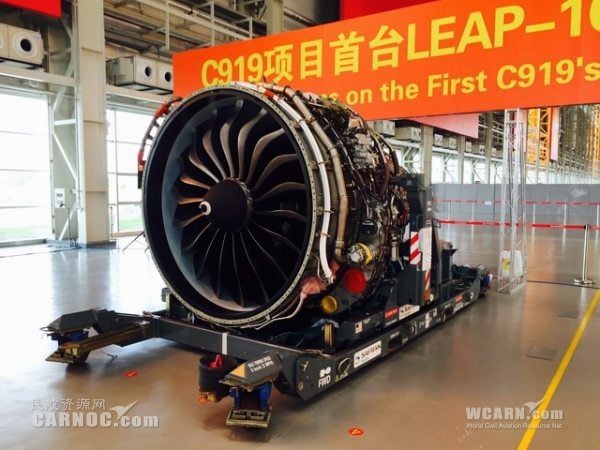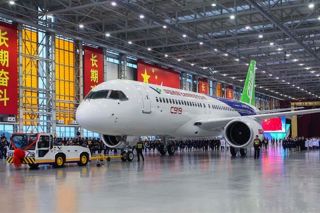By DANIEL STACEY in Kawthaung, Myanmar, and CHUN HAN WONG in Beijing
Updated March 20, 2016 9:26 p.m. ET
In June 2013, Myanma Airways Flight 309 veered off a runway in Kawthaung, Myanmar, with 60 passengers aboard and hit a wall. Myanmar’s investigation concluded the brakes and steering failed after a hydraulic-pressure drop.
Myanmar that year banned the plane, a Chinese-made Modern Ark 60 turboprop, from its airspace. Flight 309’s hulk still sits by the runway.
The day of that incident, another MA60 crash-landed in Kupang, Indonesia, injuring five. Bolivia, the Philippines and others have had MA60 accidents and grounded planes. Tonga grounded its MA60 after pressure from New Zealand, which warned its citizens not to fly in it.
China hopes soon to start exporting two new jetliners, part of its goal of securing a bigger place in global aviation and competing with giants such as Boeing Co. and Bombardier Inc. Looming over its plan is the turboprop that was supposed to be a steppingstone into foreign markets, the MA60, seating up to 60.
A Wall Street Journal examination of the MA60, the first Chinese-built airliner with sizable overseas sales, found a pattern of safety problems involving landing-gear malfunctions, braking failures and steering loss, and a track record of multiple other mishaps. Some caused injuries; one killed 25.
Fewer than half the MA60s exported since 2005 appear to be still flying abroad, according to the Journal examination of accident reports and databases, airline and government statements, media accounts, and interviews with regulators and operators.
Of the 57 MA60s the manufacturer said it had exported as of January, at least 26 were put in storage after safety concerns, maintenance problems or other performance issues, the Journal calculated. Six others were deemed damaged beyond repair, or 11% of the foreign MA60 fleet.
A comparable plane, the European-made ATR-72—Myanmar and Tonga switched to it from their MA60s—has seen 3% of its fleet of 835 damaged beyond repair in its 26 years in service, the Journal calculated . . . .
China will need confidence in its regulator when it markets its new jets. Neither jet has U.S. or European certification, so China can’t sell them in much of the developed world. It must persuade operators elsewhere its CAAC (Civil Aviation Administration of China) can provide oversight of the planes.
One is China’s first homemade commercial jetliner, the ARJ21 seating up to 90, slated for commercial debut this year. The other, the C919 seating up to 174, is at least two years from delivery. Both are built by state-owned Commercial Aircraft Corp. of China, or Comac, of which AVIC is a major shareholder. The jets are expected to have lower price tags than Western rivals’.
The CAAC certified the smaller jet in 2014, a process the U.S. Federal Aviation Administration observed. The FAA last year said it never intended to certify the ARJ21 as part of the process and would consider approving it after Comac upgraded it to Western standards, adding that Comac planned a derivative model complying with FAA standards.
The CAAC has said it also plans to seek FAA certification for the larger jet . . . .
China’s global-aviation efforts since have been mixed. China in 1970 began developing a jetliner seating up to 178, later abandoning the program after deeming the jet uneconomical. A small utility turboprop developed in the 1980s won FAA approval and flies in a number of countries. China removed the Y-7 from commercial service after a crash in 2000 killed 49. In 1988, Xi’an started developing a new Y-7 variant. The FAA in 1995 agreed to evaluate the CAAC’s certification process of that plane, a step toward potential U.S. approval. The FAA said that “this evaluation was stopped in mid-1996 after the applicant terminated the Y-7 certification program after design deficiencies were identified.”
That plane later evolved into the MA60, which Xi’an started delivering to Chinese carriers in 2000. In 2002, one operated by state-owned Wuhan Airlines belly-landed after its crew forgot to lower its gear, state-run Xinhua News Agency reported last year.
After the crash, Wuhan and other Chinese customers stopped operating the MA60 and canceled orders, with one of them citing the MA60’s subpar performance and poor profitability, Xinhua reported . . . .





 MAKS15 aduce maaare ofensiva marketing SSJ100...
MAKS15 aduce maaare ofensiva marketing SSJ100...


